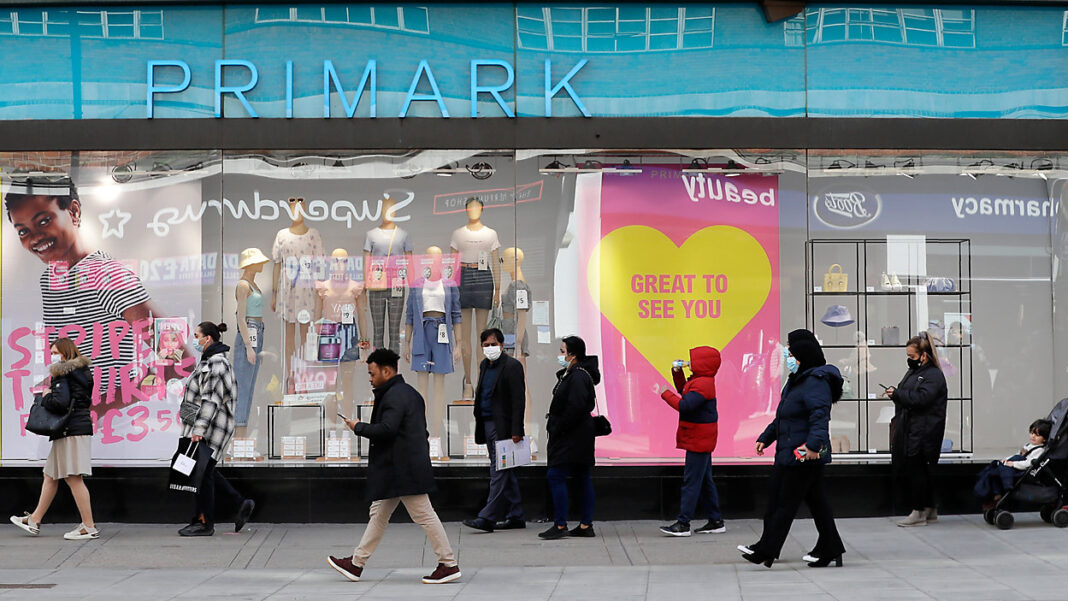|
Getting your Trinity Audio player ready...
|
Dublin Based Retailer Plans Major US “Bricks & Mortar” Expansion with $10 Dresses & No Online Shopping
Edited by: TJVNews.com
In this age of skyrocketing inflation it has become increasingly difficult to find bargains on just about anything and that includes such necessities as apparel. It does appear, however, that there may be a radiant light at the end of the proverbial tunnel in terms of finding the kind of discounts that many of us are constantly searching for.
According to a recently published article in the Wall Street Journal, the retail fashion chain known as Primark has become one of Europe’s fastest-growing retailers with a strategy almost unique among big fashion brands as they have done away with online sales.
The WSJ reported that Primark started in 1969 in Ireland, where it uses the brand name Penneys. It adopted the Primark brand elsewhere to avoid confusion with JCPenney, with which it has no connection. The WSJ reported that Primark’s founder, Arthur Ryan, led the company through its first four decades before handing the reins in 2009 to Paul Marchant, who remains in charge today.
Known for its affordable fashion offerings, Primark has entered the American market with a bang. With its unique business model, offering trendy clothing at unbeatable prices, Primark is disrupting the retail landscape and challenging the status quo. Primark has definitely had an impact on the American retail industry.
Primark’s approach stands in stark contrast to the e-commerce frenzy that has reshaped the retail sector. While most retailers strive to establish a strong online presence, Primark has chosen to focus solely on physical stores. With its “stack it high, sell it cheap” ethos, the retailer offers customers an extensive range of stylish apparel, footwear, accessories, and homeware at remarkably low prices.
By leveraging its scale and close relationships with suppliers, the retailer keeps production costs low while maintaining high-quality standards. This enables Primark to pass on significant savings to customers, with items such as dresses priced as low as $10.
Primark’s success can be attributed, in part, to its understanding of consumer demand for affordable, on-trend fashion. However, the retailer has also made efforts to address sustainability concerns. Primark has implemented initiatives to improve supply chain transparency, reduce waste, and promote ethical sourcing. It has introduced eco-friendly packaging and launched a clothing recycling program to encourage responsible consumption.
The WSJ reported that Primark has attracted a cultlike status across the Atlantic, and the brand has garnered the nickname “Primani,” as in Giorgio Armani, for its marriage of fashion and everyday price tags. The Dublin-based chain thinks that formula will drive American sales, too. As such, they are planning a major US expansion.
The entry of Primark into the American market has been met with great enthusiasm. The retailer opened its first U.S. store in 2015 in Boston and has since expanded to other major cities, including New York, Philadelphia, and Chicago. In Brooklyn, for instance, one can find a Primark store in the Kings Plaza shopping mall. The affordability and trendy offerings of Primark have resonated with American consumers, attracting a loyal customer base and generating buzz in the retail industry.
Since opening their first store in the United States, Primark sells women’s jeans priced at $16 to $22, dresses at $10 to $25 and men’s shirts from $14 to $28, as was reported by the WSJ.
“There is nobody who is doing what we’re doing around price, quality and value,” said Kevin Tulip, Primark’s U.S. president, throwing down the gauntlet to Walmart, Target and others in low-price clothing, as was reported by the WSJ. The company is also vying for shoppers with online-fashion retailers such as Shein, which is a Chinese based low priced retailer of apparel.
As Primark continues to expand its footprint across the United States, it is reshaping the retail landscape and challenging established norms, solidifying its position as a formidable player in the industry.
Cavernous and brightly lighted in the brand’s trademark white and neon blue color scheme, Primark stores often take up several floors and feature homeware and beauty products alongside racks of low-price clothing, according to the WSJ.
In recent months, Primark has been accelerating its U.S. rollout, aiming to grab a bigger slice of a retail market worth around $7 trillion. The WSJ reported that from 13 stores mostly situated in the Northeast in 2022, the company is planning 60 locations by 2026. Eleven of those are set to open this year, with Buffalo, N.Y., the latest addition in April. The WSJ also reported that the company is adding a distribution center, in Jacksonville, Florida, to anchor a Southern expansion centered on Alabama, Florida, North Carolina and Texas. That growth will take the brand into cities including Charlotte, North Carolina.
The expansion follows years of fine-tuning its formula for American shoppers, Tulip said.
The brand is owned by Associated British Foods, a London-listed conglomerate that also has sugar, grocery and agricultural operations, according to the WSJ report. ABF, in turn, is controlled by the British-Canadian Weston family, which owns the upscale London department store Fortnum & Mason. George Weston, a scion of the family, is ABF’s chief executive.
ABF financed the original Penneys store and has stood behind Primark ever since.





